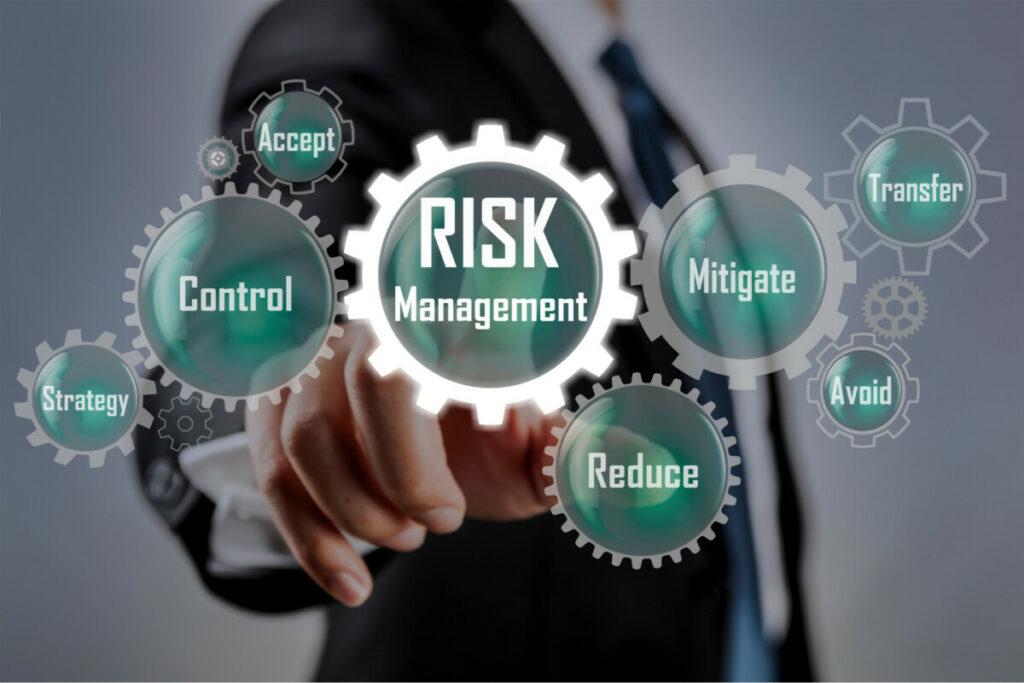Ultimate Massage Therapy Business Plan: 16-Step Guide

If you’re considering starting a massage therapy business, it’s important to have a solid plan in place to ensure success. A well-crafted business plan can help you identify your target market, outline your services, and establish a budget for your startup costs. In this article, we’ll explore the key components of a massage therapy business plan and provide tips for creating a plan that will set you up for success.
First, it’s important to identify your target market. Who are the clients you want to attract? Are you targeting athletes, busy professionals, or individuals seeking relaxation and stress relief? Once you’ve identified your target market, you can tailor your services and marketing efforts to meet their specific needs. Your business plan should also include a competitive analysis to help you understand the local market and identify opportunities for growth.
1. Executive Summary

As you embark on your massage therapy business plan, it is important to create an executive summary that outlines the key aspects of your business. This section should provide a brief overview of your business plan and highlight the most important points. The following sub-sections should be included in your executive summary:
Business Name
Your business name should be unique, memorable, and easy to pronounce. It should also reflect the nature of your business. Choose a name that resonates with your target audience and stands out from the competition.
Mission Statement
Your mission statement should clearly define the purpose of your business and what you hope to achieve. It should be concise, compelling, and memorable. Your mission statement should also align with your values and reflect the needs of your target market.
Objective and Goals
Your objective and goals should be specific, measurable, achievable, relevant, and time-bound. They should outline what you hope to achieve with your business and provide a roadmap for success. Your goals should be realistic and based on market research and industry trends.
Brief Overview of Services Offered
Your services should be clearly defined and differentiated from the competition. Provide a brief overview of the massage therapy services you offer, including the techniques you use, the benefits of each service, and the pricing.
Summary of Financial Projections
Your financial projections should be based on realistic assumptions and market research. They should include your revenue projections, expenses, and cash flow projections. Provide a summary of your financial projections, including your break-even point, net income, and return on investment.
Company Description
Your company description should provide an overview of your business, including your history, location, ownership structure, and legal status. It should also highlight your competitive advantage and unique selling proposition.
In conclusion, your executive summary should provide a clear and concise overview of your massage therapy business plan. It should be written in a confident, knowledgeable, neutral, and clear tone of voice and avoid making exaggerated or false claims.
Background & History
As you begin to develop your massage therapy business plan, it’s important to understand the background and history of the industry. This will help you to create a strong foundation for your business and ensure that you are meeting the needs of your clients.
Business Location
One of the key factors in the success of your massage therapy business is the location. You want to choose a location that is convenient for your clients and easy to find. Consider the following factors when choosing a location:
- Accessibility: Is your location easy to access by car, public transportation, or on foot?
- Visibility: Will your location be visible to potential clients?
- Competition: Are there other massage therapy businesses in the area?
- Zoning: Is your location zoned for commercial use?
Ownership Structure
Another important factor to consider when developing your massage therapy business plan is the ownership structure. There are several options to choose from, including sole proprietorship, partnership, and LLC. Each has its own advantages and disadvantages, so it’s important to choose the structure that is right for you.
Vision and Mission
Your vision and mission statement will guide the direction of your massage therapy business. Your vision statement should be a broad statement that describes the long-term goal of your business. Your mission statement should be a more specific statement that describes the purpose of your business and how you will achieve your vision.
When developing your vision and mission statement, consider the following questions:
- What do you hope to achieve with your massage therapy business?
- Who are your target clients?
- What sets your business apart from others in the industry?
- How will you measure success?
By taking the time to consider these factors, you can create a strong foundation for your massage therapy business that will help you to achieve your goals and meet the needs of your clients.
2. Products and Services

Detailed Description of Massage Therapies Offered
Your massage therapy business plan should provide a detailed description of the massage therapies you offer. This should include information on the different types of massage you offer, such as Swedish massage, deep tissue massage, sports massage, and hot stone massage. You should also include information on any specialized massage techniques you offer, such as prenatal massage or reflexology.
When describing your massage therapies, be sure to highlight the benefits of each type of massage. For example, Swedish massage is known for its relaxing and stress-reducing benefits, while deep tissue massage is ideal for relieving muscle tension and chronic pain.
Product/Service Pricing
Your massage therapy business plan should also include information on your product/service pricing. This should include the cost of each type of massage therapy you offer, as well as any packages or memberships you offer.
When setting your prices, be sure to consider the cost of your overhead, such as rent, utilities, and supplies, as well as the going rate for massage therapy in your area. You may also want to consider offering discounts for first-time clients or for clients who refer others to your business.
Product/Service Lifecycle
Your massage therapy business plan should also include information on the lifecycle of your products and services. This should include information on how often you will need to replace your supplies, such as massage oils and linens, as well as how often you will need to update your equipment, such as massage tables and chairs.
You should also consider the lifespan of your massage therapists. How long do they typically stay with your business? What kind of turnover rate can you expect? This information will be important when planning for the future of your business.
Future Services or Add-ons
Finally, your massage therapy business plan should include information on any future services or add-ons you plan to offer. This could include things like aromatherapy, CBD oil massages, or other specialized services.
When planning for future services, be sure to consider the demand for these services in your area, as well as the cost of any additional supplies or training you may need. You should also consider how these new services will fit into your existing business model and how they will impact your bottom line.
3. Market Analysis

Market Size
When it comes to massage therapy, the market is vast and continually growing. According to IBIS World, the massage industry’s annual revenue in the US is around $18 billion, with an annual growth rate of 3.5%. This growth is expected to continue, making it a profitable industry to invest in.
Target Audience
Your target audience for your massage therapy business will depend on the type of services you offer. However, generally, the audience for massage therapy includes individuals who are looking to improve their physical and mental well-being. This may include people who are dealing with stress, chronic pain, or injuries, as well as athletes and fitness enthusiasts.
Market Segmentation
To effectively market your massage therapy business, you need to understand the different segments of the market. These segments may include age, gender, income, and location. For example, you may target older adults who are dealing with arthritis or younger adults who are looking to improve their athletic performance.
Market Trends
The massage industry is continually evolving, and it’s essential to stay up-to-date with the latest trends. Some of the current trends in the industry include the use of technology, such as massage chairs and apps, as well as the growing popularity of alternative therapies, such as aromatherapy and hot stone massage.
Competitive Analysis
When starting a massage therapy business, it’s crucial to understand your competition. This may include other massage therapy businesses in your area, as well as alternative therapies, such as chiropractors and acupuncturists. You should research their pricing, services, and marketing strategies to determine how you can differentiate your business and stand out in the market.
Overall, the massage therapy industry offers a lucrative opportunity for entrepreneurs who are passionate about helping others improve their physical and mental well-being. By conducting thorough market research and staying up-to-date with the latest trends and competition, you can develop a successful massage therapy business plan.
4. Marketing and Sales Strategy

Branding and Positioning
Your massage therapy business should have a clear and consistent brand that reflects your values and services. Your branding should be reflected in all aspects of your business, from your website to your business cards. Positioning your business as a high-quality, professional service can help attract clients who are willing to pay a premium for your services.
Marketing Channels
There are many marketing channels you can use to promote your massage therapy business. Some effective channels include social media, email marketing, and search engine optimization (SEO). Social media platforms like Facebook and Instagram can help you reach a wider audience and connect with potential clients. Email marketing can be used to keep current clients informed about promotions and new services. SEO can help your website rank higher in search engine results, making it easier for potential clients to find you.
Sales Tactics
When it comes to selling your massage therapy services, it’s important to focus on the benefits your clients will receive. Highlight the relaxation, stress relief, and pain reduction benefits of your services. You can also offer package deals or loyalty programs to encourage repeat business.
Promotion Strategy
Promotions can be a great way to attract new clients and encourage repeat business. Some effective promotions include discounts for first-time clients, referral incentives, and holiday specials. Make sure to promote your promotions on your website and social media channels.
Partnership Opportunities
Partnering with other businesses can help you reach new clients and expand your network. Consider partnering with local gyms, yoga studios, or wellness centers. You can offer discounted services to their clients and they can promote your services to their network.
Overall, a strong marketing and sales strategy can help your massage therapy business stand out and attract new clients. By focusing on your branding, marketing channels, sales tactics, promotion strategy, and partnership opportunities, you can create a successful and profitable business.
5. Operational Plan

Physical Setup
Your massage therapy business requires a comfortable and inviting space for clients to relax and receive treatments. Consider the following physical setup details:
- Location: Choose a location that is easily accessible and visible to potential clients. Consider the amount of space you need and whether you want to rent or buy the property.
- Interior Design: Create a calming and peaceful atmosphere with soft lighting, soothing colors, and comfortable furniture. Invest in quality massage tables and equipment.
Supplier Details
To ensure the success of your massage therapy business, you need reliable suppliers for your products and equipment. Consider the following supplier details:
- Massage Oils and Lotions: Choose high-quality, natural products that are safe for your clients and provide a pleasant experience.
- Equipment: Invest in quality massage tables, linens, and other equipment to ensure a comfortable experience for your clients.
Technology & Software
Technology and software can help streamline your business operations and improve customer experience. Consider the following technology and software details:
- Online Booking System: Invest in an online booking system that allows clients to schedule appointments easily and efficiently.
- Payment Processing: Choose a payment processing system that is secure and easy to use for both you and your clients.
Employee and Staffing Plan
Your massage therapy business requires skilled and knowledgeable staff to provide quality services to your clients. Consider the following employee and staffing plan details:
- Staffing Levels: Determine the number of therapists you need to meet demand and ensure quality service.
- Training and Development: Invest in ongoing training and development for your staff to ensure they are up-to-date with the latest techniques and trends.
Day-to-Day Operations
To ensure the smooth day-to-day operations of your massage therapy business, consider the following details:
- Scheduling: Create a schedule that ensures you have enough staff to meet demand and that appointments are spaced out appropriately.
- Cleaning and Maintenance: Develop a cleaning and maintenance plan to ensure your space is clean and inviting for clients.
- Customer Service: Provide excellent customer service to ensure a positive experience for your clients and encourage repeat business.
6. Management and Organization

Organizational Structure
Your massage therapy business will have a flat organizational structure with a clear chain of command. You will be the owner and manager of the business, and you will be responsible for overseeing the day-to-day operations. You may also hire an assistant manager to help you with administrative tasks.
Roles and Responsibilities
As the owner and manager, your responsibilities will include managing the budget, overseeing marketing efforts, hiring and training staff, and ensuring that the business is compliant with all local regulations. Your assistant manager, if you choose to hire one, will be responsible for handling administrative tasks such as scheduling appointments and managing client records.
Your massage therapists will be responsible for providing high-quality massages to clients, ensuring that clients are comfortable and satisfied with their experience, and maintaining a clean and welcoming environment.
Hiring Plan and Qualifications
When hiring massage therapists, you should look for candidates who are licensed and have experience in the field. You may also require that candidates have completed a certain number of hours of training in specific massage techniques. Additionally, you may want to consider candidates who have experience in customer service or sales, as they will be interacting with clients on a regular basis.
Training and Development Plans
Once you have hired your massage therapists, you should provide them with ongoing training and development opportunities to help them improve their skills and stay up-to-date with the latest techniques and trends in the industry. This may include attending workshops and conferences, participating in online training courses, or providing in-house training sessions.
By creating a clear organizational structure, defining roles and responsibilities, hiring qualified staff, and providing ongoing training and development opportunities, you can ensure that your massage therapy business is well-managed and poised for success.
7. Legal Structure and Compliance

As a massage therapist, it is important to ensure that your business is legally compliant. This includes selecting the appropriate business entity type, obtaining the necessary licenses, certifications, or permits, and obtaining appropriate insurance coverage.
Always consult a legal professional.
Business Entity Type
Choosing the right business entity type is crucial for legal compliance and tax purposes. The most common business entity types for massage therapists are sole proprietorship, limited liability company (LLC), and professional corporation (PC). Each has its own advantages and disadvantages, so it is important to consult with a legal professional to determine which is best for your specific situation.
Licenses, Certifications, or Permits
Massage therapy is regulated in most states, and obtaining the necessary licenses, certifications, or permits is a legal requirement. Requirements vary by state, so it is important to research the specific requirements in your state and ensure that you are in compliance.
Insurance Requirements
Massage therapists should have appropriate insurance coverage to protect themselves and their clients. This may include general liability insurance, professional liability insurance, and workers’ compensation insurance. It is important to consult with an insurance professional to determine which types of coverage are necessary for your specific situation.
By ensuring that your massage therapy business is legally compliant, you can protect yourself and your clients and set your business up for success.
8. Customer Engagement and Retention Strategy

Follow-up Procedures
Your massage therapy business plan should include a follow-up procedure to engage and retain customers. This involves contacting customers after their appointment to ensure their satisfaction and encourage them to return. You can do this through phone calls, emails, or text messages. A follow-up procedure can also include reminders for upcoming appointments to ensure that customers don’t forget and miss their scheduled time.
Feedback Collection
Collecting feedback from your customers is an important part of your customer engagement and retention strategy. Feedback can help you understand what your customers like and don’t like about your services, and can help you improve your business. You can collect feedback through surveys, comment cards, or by asking customers directly. Make sure to take the feedback seriously and consider making changes based on the feedback you receive.
Membership or Subscription Services
Offering membership or subscription services can be a great way to engage and retain customers. This can include offering discounts for frequent visits, or offering a subscription service for regular appointments. Membership or subscription services can help create a loyal customer base, and can also provide a steady stream of income for your business.
In summary, your customer engagement and retention strategy should include follow-up procedures, feedback collection, and membership or subscription services. By implementing these strategies, you can create a loyal customer base and improve the overall success of your massage therapy business.
9. Financial Projections

Start-up Expenses Breakdown
When starting a massage therapy business, there are several costs to consider. These costs can be divided into two categories: one-time start-up expenses and ongoing monthly operating costs. Start-up expenses include things like equipment, supplies, legal fees, and marketing expenses. Below is a breakdown of the estimated start-up expenses for your massage therapy business.
Always consult a financial professional.
Note that this is an example of startup expenses, your numbers will differ.
| Start-up Expense | Estimated Cost |
|---|---|
| Equipment (massage table, sheets, etc.) | $5,000 |
| Supplies (oils, lotions, etc.) | $1,000 |
| Legal Fees (incorporation, permits, etc.) | $2,000 |
| Marketing Expenses (website, business cards, etc.) | $1,500 |
| Total | $9,500 |
Revenue Projections
To create revenue projections for your massage therapy business, you will need to consider factors such as the number of clients you can see per day, the services you offer, and your pricing strategy. Below is a conservative estimate of the revenue you can expect to generate in your first year of operation:
Note that this is an example of revenue projections, your numbers will differ.
| Service | Price | Number of Clients per Week | Annual Revenue |
|---|---|---|---|
| 60-Minute Massage | $80 | 10 | $41,600 |
| 90-Minute Massage | $120 | 5 | $31,200 |
| Total | $72,800 |
Monthly Operating Cost Estimate
In addition to start-up expenses, you will also need to factor in ongoing monthly operating costs. These costs include rent, utilities, insurance, and employee wages (if applicable). Below is an estimate of the monthly operating costs for your massage therapy business:
Note that this is an example of monthly operating costs, your numbers will differ.
| Expense | Estimated Monthly Cost |
|---|---|
| Rent | $1,500 |
| Utilities | $200 |
| Insurance | $150 |
| Employee Wages (if applicable) | $3,000 |
| Total | $4,850 |
Break-even Analysis
A break-even analysis is a useful tool for determining the point at which your massage therapy business will start to generate a profit. In order to break even, you will need to generate enough revenue to cover your monthly operating costs. Based on the estimates above, your break-even point will be approximately 67 clients per month.
Profit and Loss Projection
A profit and loss projection is a financial statement that shows the revenues, costs, and expenses associated with your massage therapy business over a specified period of time. Below is a projected profit and loss statement for your first year of operation:
Note that this is an example of profit and loss projection, your numbers will differ.
| Category | Amount |
|---|---|
| Revenue | $72,800 |
| Cost of Goods Sold | $6,000 |
| Gross Profit | $66,800 |
| Operating Expenses | $58,200 |
| Net Profit | $8,600 |
Cash Flow Forecast
A cash flow forecast is a financial statement that shows the inflows and outflows of cash for your massage therapy business over a specified period of time. It is important to have a positive cash flow in order to ensure that you have enough money to cover your expenses. Below is a projected cash flow statement for your first year of operation:
Note that this is an example of a cash flow forecast your numbers will differ.
| Month | Inflows | Outflows | Net Cash Flow |
|---|---|---|---|
| January | $6,067 | $6,000 | $67 |
| February | $6,067 | $6,000 | $67 |
| March | $6,067 | $6,000 | $67 |
| April | $6,067 | $6,000 | $67 |
| May | $6,067 | $6,000 | $67 |
| June | $6,067 | $6,000 | $67 |
| July | $6,067 | $6,000 | $67 |
| August | $6,067 | $6,000 | $67 |
| September | $6,067 | $6,000 | $67 |
| October | $6,067 | $6,000 | $67 |
| November | $6,067 | $6,000 | $67 |
| December | $6,067 | $6,000 | $67 |
| Total | $72,800 | $72,000 | $800 |
10. Funding Request

Amount Requested
You are seeking a loan of $50,000 to start your massage therapy business. This amount will cover the initial costs of renting a space, purchasing equipment, and hiring staff. You have carefully calculated your expenses and believe that this amount will allow you to start your business with a strong foundation and set you up for future success.
Use of Funds
The loan will be used to cover the following expenses:
- Rent for a commercial space
- Purchase of massage tables, linens, and other equipment
- Hiring of licensed massage therapists and administrative staff
- Marketing and advertising expenses
You have researched the costs of each of these items and have created a detailed budget that outlines how the funds will be allocated. You are confident that these expenses are necessary for the successful launch and growth of your business.
Loan Repayment Plan/Equity Offer
You plan to repay the loan over a period of five years, with a fixed interest rate of 6%. Your monthly payments will be $966.45. You are confident that your business will generate enough revenue to cover these payments while also providing a profit.
Alternatively, you are open to discussing an equity offer with potential investors. You would be willing to offer a 5% equity stake in your business in exchange for a $50,000 investment. This would allow you to avoid taking on debt and would provide investors with a potential return on their investment as your business grows.
Overall, you are confident in your business plan and believe that the loan or equity offer will allow you to successfully launch and grow your massage therapy business.
11. Risk Management

Potential Risks
When running a massage therapy business, there are several potential risks that you should be aware of. These risks include:
- Client injuries
- Employee injuries
- Property damage
- Data breaches
- Professional liability
To mitigate these risks, it is important to have a comprehensive risk management plan in place.
Mitigation Plans
To prevent client injuries, make sure your therapists are properly trained and licensed. Have them review and sign a liability waiver before each session. Additionally, make sure your equipment is well-maintained and regularly inspected.
To prevent employee injuries, provide proper training and safety equipment. Ensure that your workplace is free of hazards and that your employees are aware of emergency procedures.
To prevent property damage, install a security system and take measures to prevent theft and vandalism. Have a plan in place for natural disasters and other emergencies.
To prevent data breaches, implement strong cybersecurity measures, such as firewalls and encryption. Train your employees on how to handle sensitive data and have a plan in place for responding to a breach.
To prevent professional liability, make sure your therapists are properly trained and licensed. Have them follow ethical guidelines and avoid making false claims about the benefits of massage therapy.
By implementing these mitigation plans, you can reduce the potential risks associated with running a massage therapy business.
12. Sustainability and Social Responsibility

Eco-friendly Practices
When it comes to running a massage therapy business, sustainability and eco-friendliness should be a top priority. By implementing eco-friendly practices, you can reduce your environmental impact and save money in the long run.
Here are a few ways you can make your massage therapy business more eco-friendly:
- Use natural and organic products: Choose natural and organic massage oils, lotions, and other products to reduce the amount of harmful chemicals that end up in the environment.
- Use energy-efficient equipment: Use energy-efficient light bulbs, heating and cooling systems, and other equipment to reduce your energy consumption and save money on your utility bills.
- Reduce waste: Implement a recycling program and use reusable towels and linens to reduce the amount of waste your business produces.
13. Community Engagement Initiatives

In addition to being eco-friendly, it’s important for your massage therapy business to be socially responsible and engaged with your community. By getting involved in community initiatives, you can build a positive reputation and attract more clients.
Here are a few community engagement initiatives you can implement:
- Volunteer at local events: Volunteer your time and services at local events to build relationships with your community and promote your business.
- Partner with local businesses: Partner with other local businesses to offer joint promotions and discounts, and to support each other’s growth.
- Support local charities: Donate a portion of your profits to local charities and organizations that align with your values.
By implementing eco-friendly practices and community engagement initiatives, you can build a sustainable and socially responsible massage therapy business that benefits both your clients and your community.
14. Exit Strategy

When creating a massage therapy business plan, it’s important to consider your exit strategy. Even if you plan on running your business for many years, having an exit strategy in place can help you prepare for unexpected changes or opportunities.
One option for exiting your business is to sell it to someone else. This could be a fellow massage therapist, a larger massage therapy company, or even a business in a related field. To make your business more attractive to potential buyers, you should have clear financial records, a strong client base, and a well-trained staff.
Another option is to pass your business down to a family member or trusted employee. This can be a great way to ensure that your legacy continues and that your business remains in good hands. To make this option work, you’ll need to have a clear succession plan in place and ensure that the person you’re passing the business to is prepared to take on the responsibilities of ownership.
Finally, you may decide to simply close your business when the time comes. In this case, you’ll need to have a plan in place for wrapping up loose ends, such as finishing any outstanding projects, paying off debts, and notifying clients and employees.
No matter which exit strategy you choose, it’s important to plan ahead and be prepared for any unexpected changes that may arise. By doing so, you can ensure that your massage therapy business will continue to thrive long after you’ve moved on.
15. Contingency Plans

Response to Unexpected Challenges
When running a massage therapy business, it is important to have contingency plans in place to ensure the continued success of your business. Unexpected challenges can arise, such as a sudden decrease in clients, a natural disaster, or a global pandemic. Here are some ways to respond to unexpected challenges:
- Diversify your services: If your massage therapy business is experiencing a decrease in clients, consider offering additional services such as aromatherapy, reflexology, or skincare treatments. This can attract a new client base and increase revenue streams.
- Offer discounts or promotions: During tough times, clients may be more hesitant to spend money. Consider offering discounts or promotions to help incentivize clients to continue booking appointments.
- Implement safety protocols: In the event of a natural disaster or global pandemic, it is important to have safety protocols in place to protect both clients and employees. This can include increased sanitation measures, mandatory mask-wearing, and social distancing.
- Utilize technology: If your massage therapy business is unable to operate in-person, consider offering virtual appointments or consultations. This can help maintain client relationships and generate revenue during challenging times.
By having contingency plans in place, you can ensure that your massage therapy business is able to weather unexpected challenges and continue to thrive.
16. Appendices

Detailed Price List
Include a detailed list of all services offered by your massage therapy business, along with the corresponding prices. This will give potential clients an idea of what they can expect to pay for your services. Be sure to include any discounts or package deals that you offer.
Sample Marketing Materials
Include samples of any marketing materials you have created, such as flyers, brochures, or business cards. This will give potential clients an idea of your branding and marketing strategy.
Resumes of Key Personnel
Include resumes or bios of any key personnel in your massage therapy business, such as the owner or lead therapist. This will give potential clients an idea of your team’s qualifications and experience.
Equipment List with Costs
Include a list of all equipment needed to run your massage therapy business, along with the corresponding costs. This will give potential investors an idea of your startup costs and ongoing expenses.
Relevant Licenses or Certifications
Include copies of any relevant licenses or certifications required to run a massage therapy business in your area. This will show potential clients and investors that you are operating legally and ethically.
Client Testimonials
Include a selection of client testimonials that showcase the quality of your services. This will give potential clients an idea of the benefits they can expect from working with your business.





